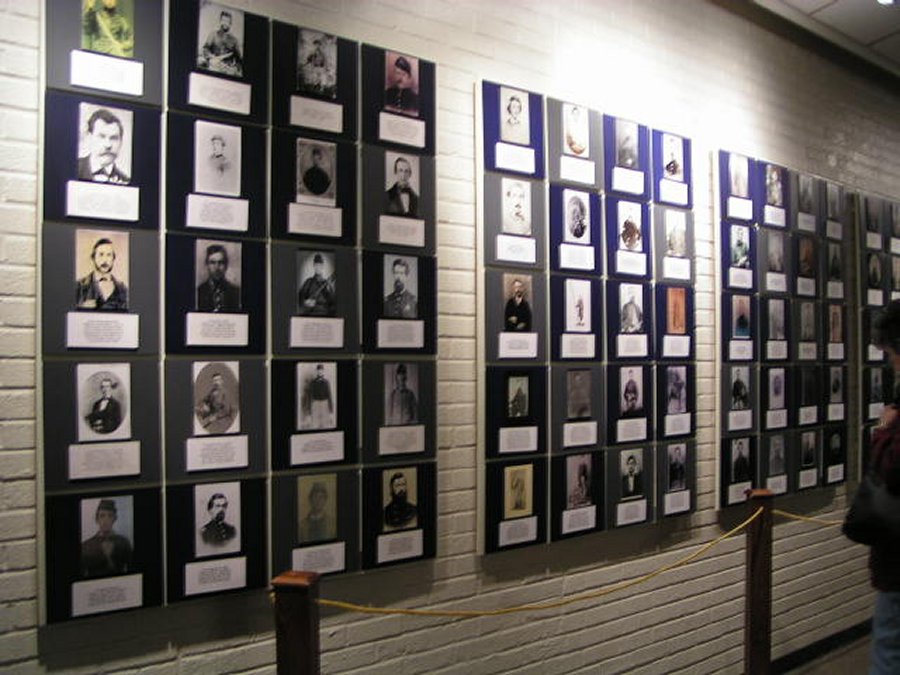
Soldiers that fought at Gettysburg. If anyone has a picture of a relative that fought they can display it here. |
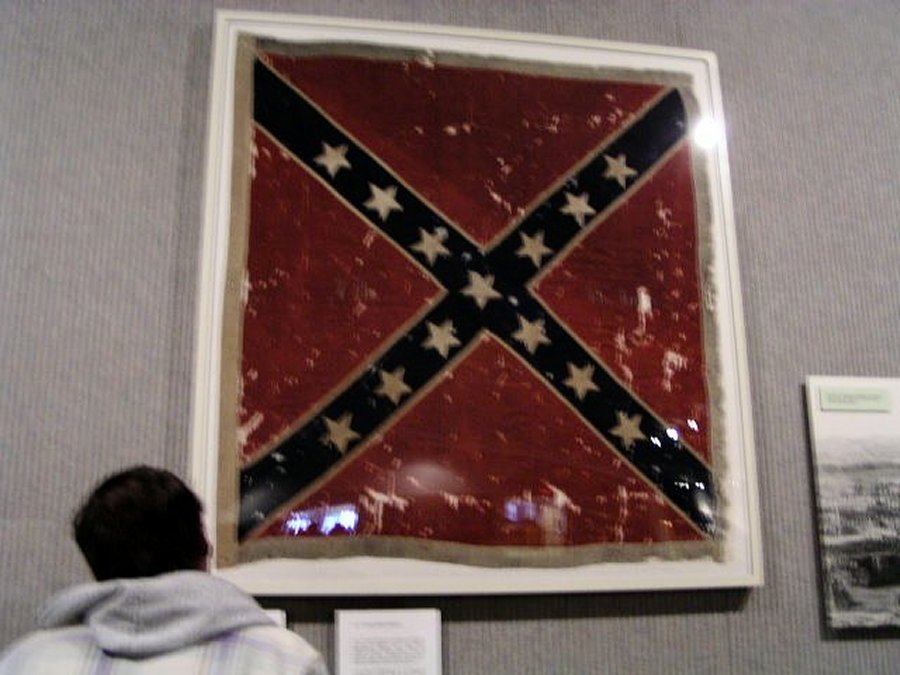
This flag was issued to the regiment in June 1863 when Major General George Pickett's Virginia Division received new regimental flags from the Confederate Government. The flag was captured less than one month later on July 3rd, 1863 at the Battle of Gettysburg by a member of the 82nd New York Infantry. |
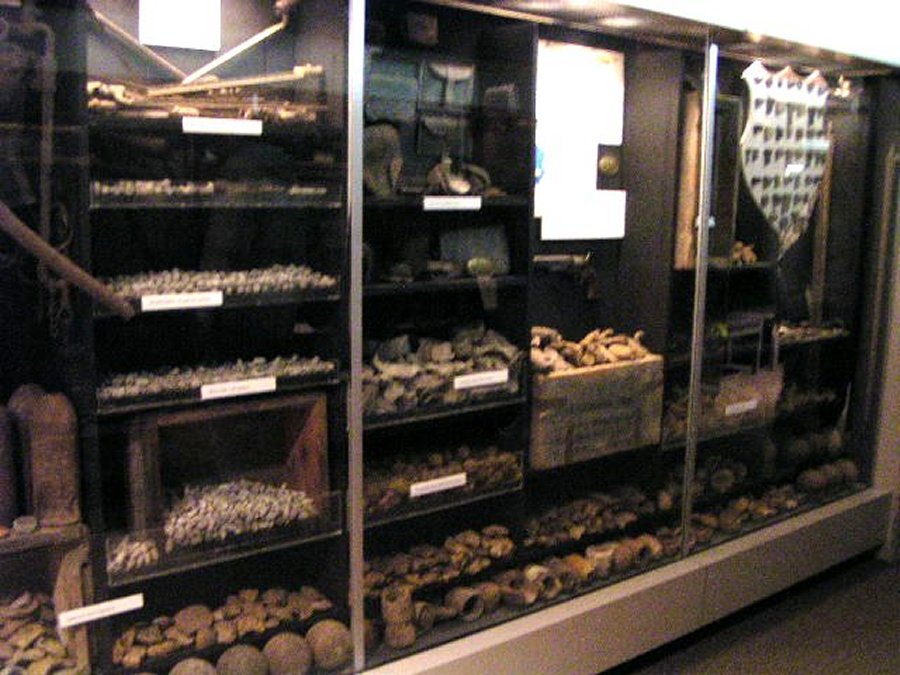
On July 2nd Henry and Sarah Spangler's farm became a staging area for Confederate attacks against the Union line on Cemetery Ridge. The 152 acre farm suffered extensively and as a result most of this material was found on his farm. |

Sharpshooters from both armies plied their deadly trade in town throughout July 2nd and 3rd. firing from open doorways and windows, they often left their marks upon the private possession of Gettysburg' residents. This footboard from the bed of James McDonnell's home on West Street was hit three times by rifle fire. Bullet holes are by the red arrows. |

This is a Model 1857, 12-pounder field gun. It was designed to fire shot, shell, case shot and canister. It was called the "workhorse" of Civil War artillery, for its maneuverability and overall effectiveness. Both at long-range dueling and in close against onrushing infantry it had no peer. |

Until 1861, the hand grenade as an implement of war had undergone little change. It was a hollow iron sphere filled with gunpowder and ignited by a short time fuse. It had two disadvantages: it could blow up before it left the hand or it could be thrown back by the enemy before it exploded. |
Soldiers' national Cemetery contains the graves of
more than 6,000 United States servicemen, including 3,580 Union soldiers killed in the Civil War. Nearly half
the Civil War burials are unknown soldiers.
A few days after the battle, Andrew Curtin Governor of Pennsylvania, visited Gettysburg and was deeply moved
by what he saw. Bodies of soldiers had been buried on the battlefield, and some had not been buried at all.
Curtin and representatives of Northern states took steps to create a national cemetery. Beginning in October
1863, bodies were carefully removed from the field and re-interred here. The work took five months.
On November 19, 1863, before the burials were completed, government officials, battle veterans, and citizens
assembled to dedicate the cemetery. Near the end of the ceremonies, the President of the United States,
Abraham Lincoln, offered a few remarks - his Gettysburg Address. |

Gettysburg National Cemetery is across the street from the visitor center. |

The Lincoln Memorial commemorates Lincoln's Gettysbury Address November 19, 1863. |

The Address was delivered about 300 yards from the spot of the Lincoln Memorial. |

Letter of invitation to President Lincoln November 19, 1863. This plaque is on the left of the Lincoln Memorial. |
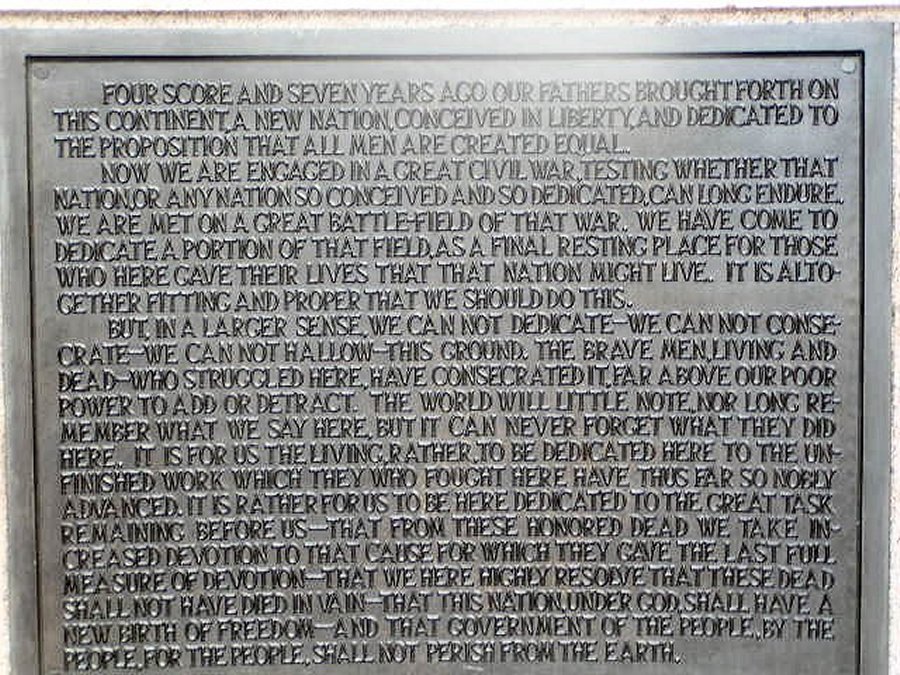
Lincoln's Gettysburg address. This plaque is on the right of the Lincoln Memorial. |

This is the Ohio memorial. |
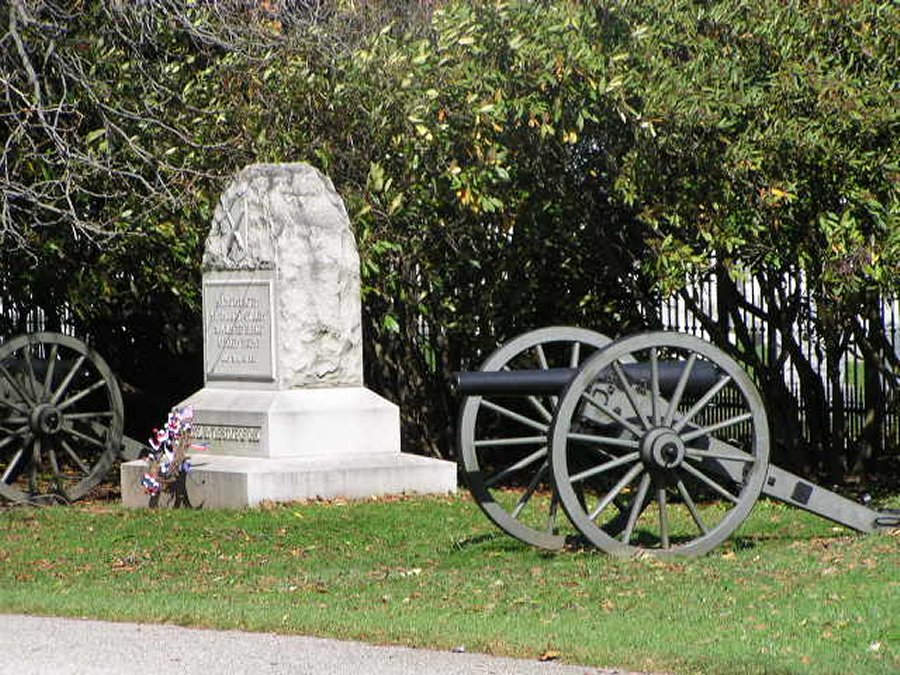
Long shot of the Ohio Memorial. |

Tombstones in the cemetery. |
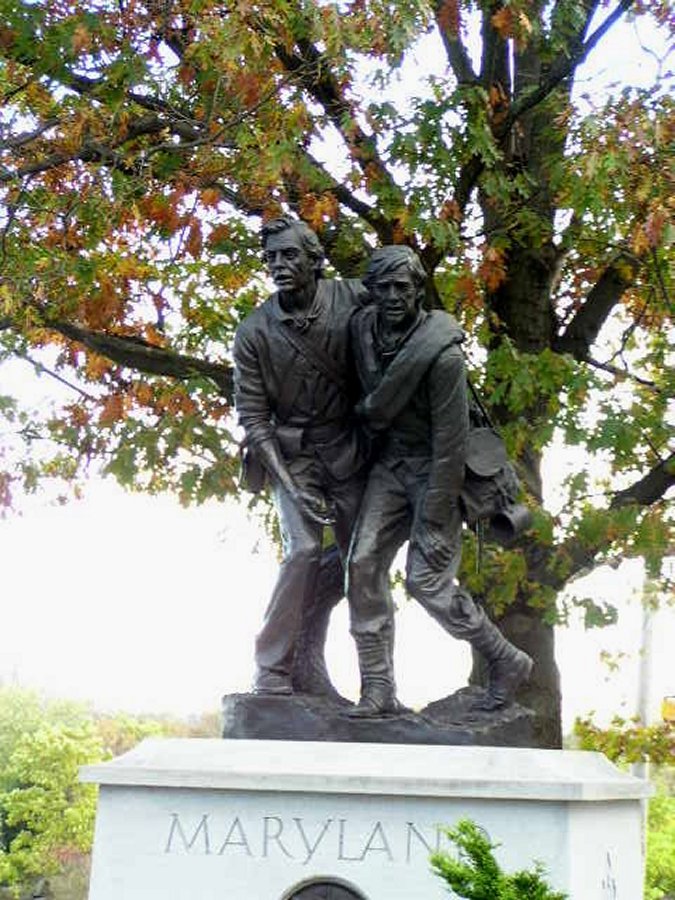
This is the Maryland Memorial. |
The Gettysburg Cyclorama portraying "The High
Tide of the Confederacy" on July 3, 1863, is one of the outstanding paintings of battle scenes in existence.
Here is depicted the final great effort of Confederate General Robert E. Lee to destroy the Union Army
of the Potomac commander by General George G. Meade. Also represented is a broad view of the battlefield
with its famous landmarks, fields and woodlands as they appeared at the time of this historic event. The
master artist of this creation now on display the Gettysburg National Military Park was Paul Dominique
Philippoteaux. This version was first exhibited in Boston, Massachusetts in 1884, and has been displayed
in Gettysburg since 1913. The painting measures approximately 360 feet long by 26 feet height and weighs
almost three tons.
This painting is on the third floor of the The Gettysburg Cyclorama and is like a stand up theater in
the round. The lights are turned out and a recording started. The recording tells the story of the battle
while lights highlight the portion of the painting being talked about. Gunfire and cannons shots can be
heard above the story teller. As the program continues the whole painting is lit up and we are allowed to
walk around the area looking at different parts of the painting as it is narrated. It is an awesome experience. |
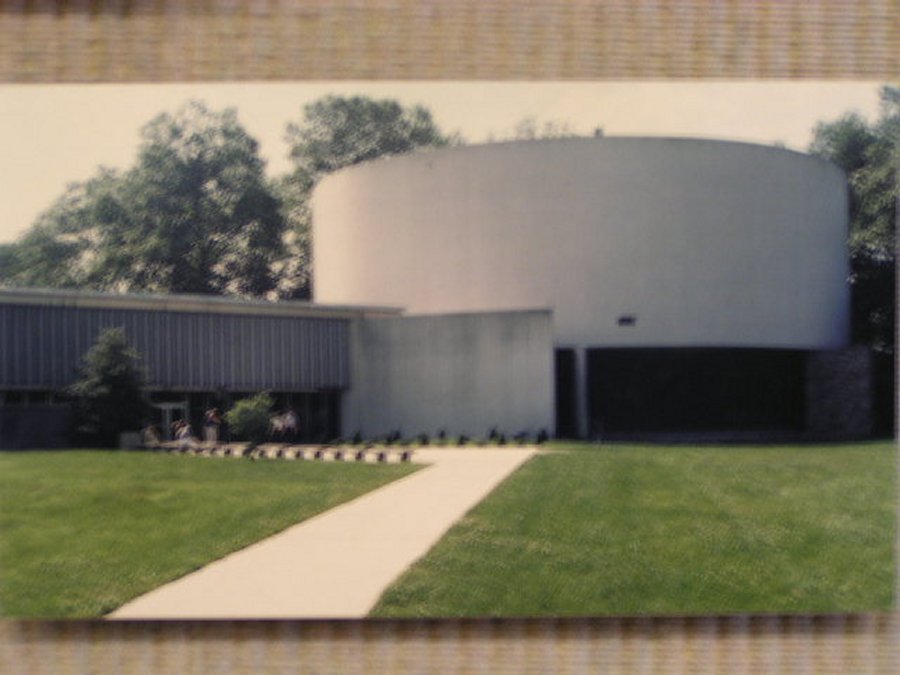
The Cyclorama where the 360 degree picture is. |
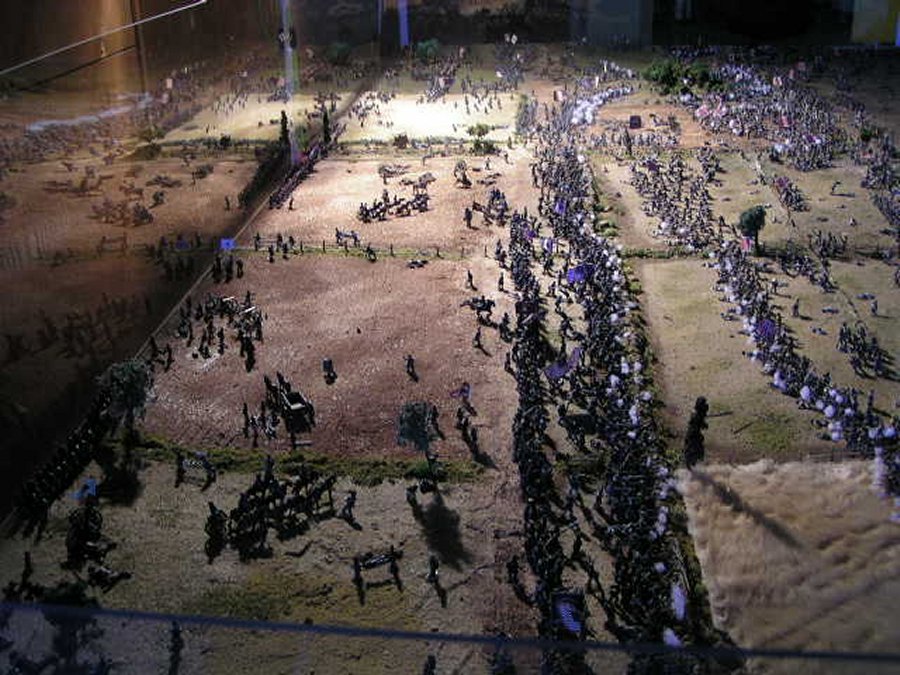
51,000 total casualties (killed, wounded, captured and missing) for the three days of fighting were 23,000 for the Union army and as many as 28,000 for the Confederate army. |
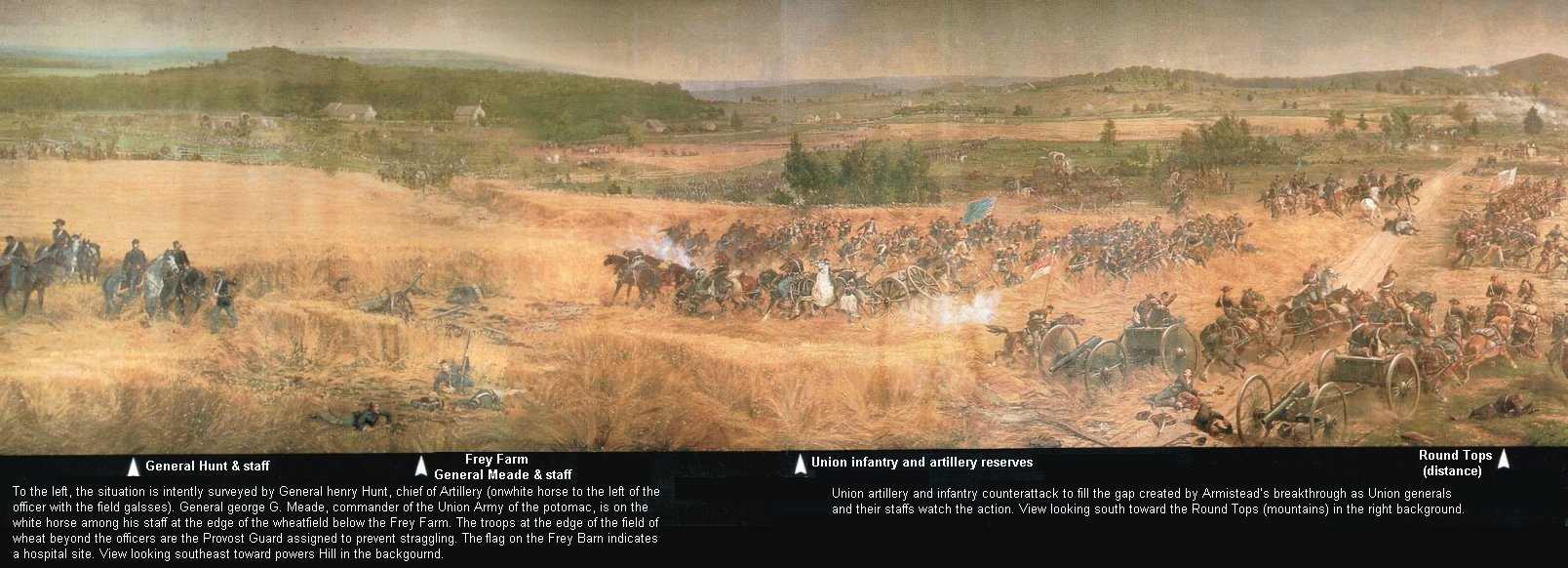
Panel 7 and 8. |

Panel 5 and 6. |
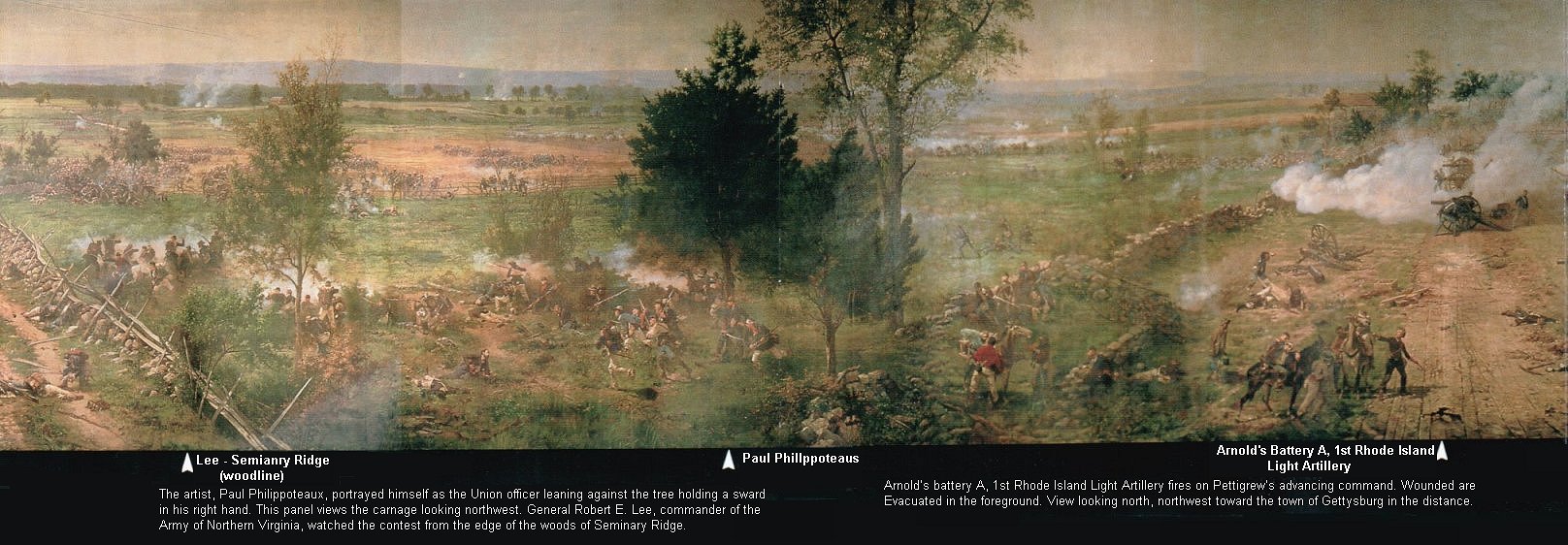
Panel 3 and 4. |

Panel 1 and 2. |

The battlefield as it is today with statues and memorials. |

This memorial is in the battlefield. |
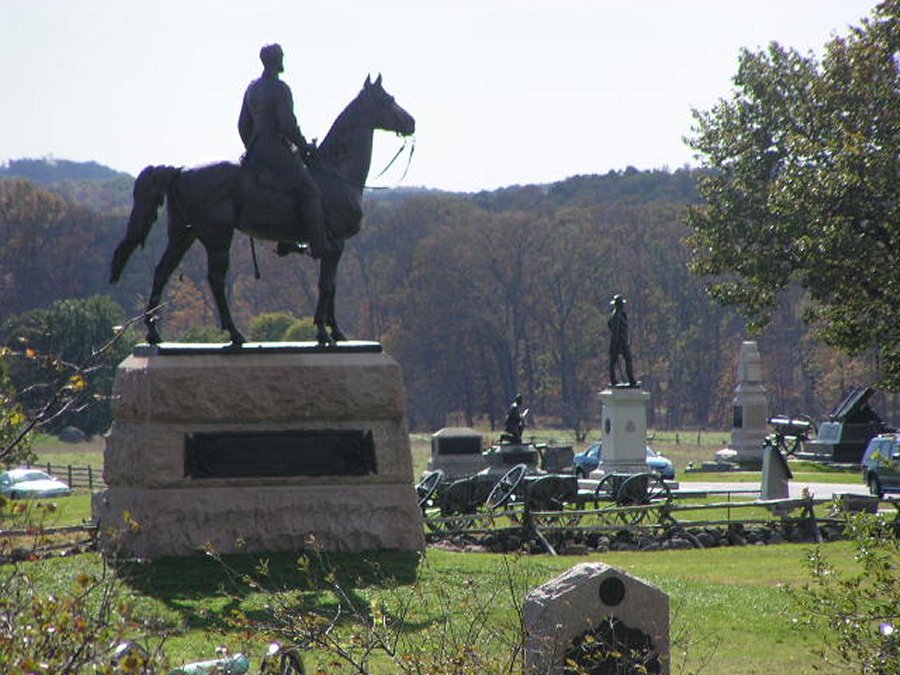
Another memorial is in the battlefield. |
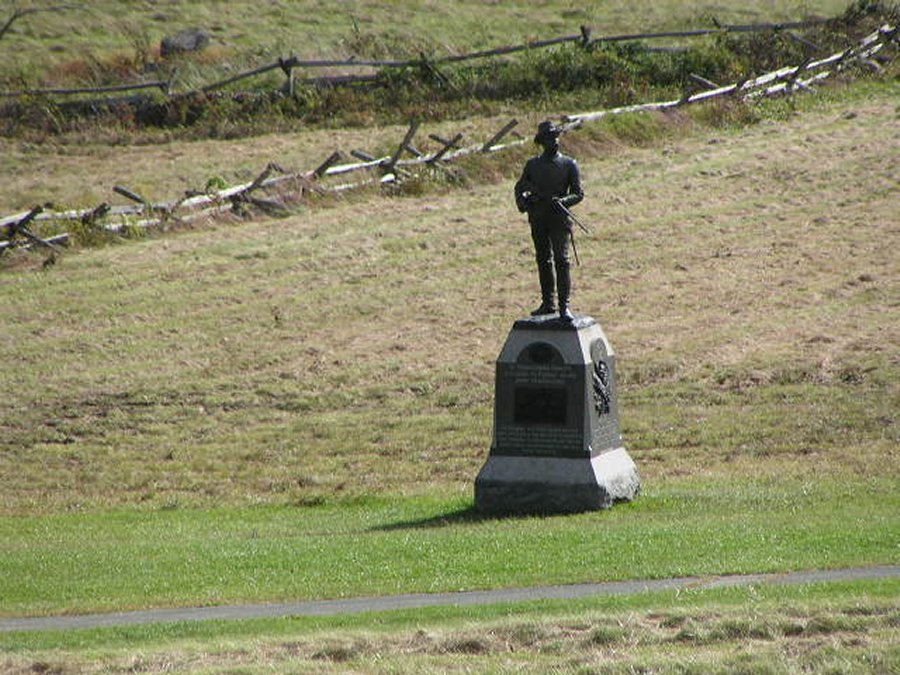
Another memorial is in the battlefield. |

Statue of General Robert E. Lee. |
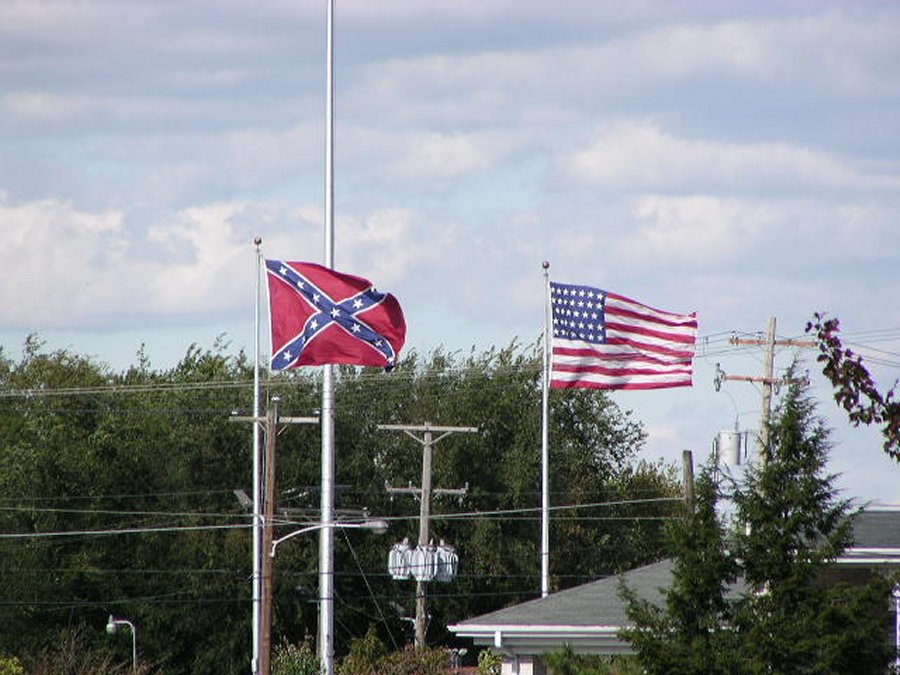
Wind blowing the flags out straight. |

![]()

![]()
![]()